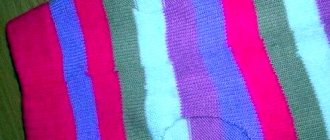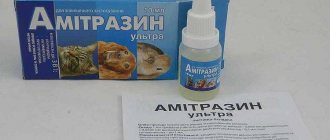Briefly about the purpose
We will not consider the options for the mentioned “clothing” only as an interesting addition to the image of a pet, although in some cases a blanket is really needed for practical purposes (for example, for heating short-haired or hairless cats and cats).
Clothing is highly desirable and necessary in winter for Peterbalds and Sphynx dogs.
Most often, this element of a cat's wardrobe is used to protect the postoperative suture from dirt, pathogens, fungi, and even the tongue of the animal itself, which strives to lick the wound. Inflammation of the suture is one of the most important complications after surgery, so it’s not worth the risk.
Created on a fabric basis and placed on the cat immediately after the procedure, the bandage will block any access to the stitches and facilitate their quick tightening. In many private clinics, it is given to each operated animal at no additional cost, but even if this does not happen, you can purchase a blanket at any specialized store with a large assortment of similar products, or, as a last resort, sew it yourself.
Important! Before looking for a post-operative bandage or making one yourself, check with your veterinarian whether it is necessary to use it, because today there are many technologies for suturing, after which a blanket is not required or may even cause harm.
The need for blankets
The bandage performs a protective function. The use of a postoperative blanket for cats prevents the entry of dirt, moisture, bacteria, and fungi. Cats also tend to lick their wounds, but in this situation this can only be harmful. During this process, the animal can become infected and even spill the seam. Subsequently, repeated surgery may be necessary. It is important to check with your doctor whether there is a need for a bandage, because with some suturing techniques, it can, on the contrary, cause harm. The bandage is usually put on immediately after surgery. Your doctor will tell you when you can remove the blanket from your cat after sterilization.
There is also a sanitary bandage and a rain cover. In the first case, it is used for hygiene purposes in short-haired animals during periods of sweating. In the second case, for a walk on the street, in order to protect the animal from wind, dust, and rain.
Selection criteria and types of blankets
In modern pet stores there is a huge number of different blankets for cats, which are designed not only to protect the seam after the same sterilization, but also to insulate the animal or protect your furniture from the products of metabolic processes in its body (for example, it is known that sphinxes can very sweat, leaving unpleasant streaks or stains on home furniture).
When choosing any of the above options, make sure that it is made only from natural and body-friendly materials, otherwise the possibility of irritation of your pet’s skin cannot be ruled out.
As for the postoperative (let's call it “medical”) blanket, it is usually made of thick cotton fabric, with well-finished edges, and this, I must say, is the most successful option.
It is important for every cat owner to know about the advisability of sterilization and the possible consequences.
In its classic form, it is a rectangular piece of fabric with cutouts for paws and ties along the edges (there are seven of them in total: three are in the central part, two are located behind the holes for the front paws, and two more are fixed perpendicular to the harnesses located in the middle of the blanket in its rear area).
As an alternative, you can purchase such a bandage not with ties, but with Velcro, which makes it much more convenient to fix it on the cat, adjusting the desired length. True, such a blanket will cost more.
Almost all such products have similar sizes, but in any case, if possible, it is better to check whether it will not interfere with your pet going to the toilet or simply moving freely around the house. This can be done before surgery by simply trying on the selected model.
Product functions
The need for the cat to wear a special blanket or bandage during the postoperative period is determined by the doctor who performed the operation. Sometimes the specialist is able to place stitches in such a way that the cat does not need additional support. Therefore, wearing a bandage is not prescribed.
In most cases, the presence of a blanket is necessary, since additional protection of the operated area from dirt and pathogens is required. Contact of any contaminants or pathogens on unhealed wounds can cause an inflammatory process, which can lead to various complications. The blanket will close the seams from the external environment, thereby promoting faster healing of wounds.
This bandage prevents the pet from licking the operated area. The tongue of these furry animals is very rough. Therefore, he is able to damage the stitches, opening the wound. Cat saliva is considered a natural antiseptic. But it contains a large number of bacteria, some of which can cause inflammation. The blanket is an excellent protection against these two risk factors.
Wearing also limits the animal's mobility, thereby minimizing the possibility of seams coming apart due to the cat's activity. During the postoperative period, ichor or blood may leak from a still fresh suture. Such discharge not only stains your pet's fur, but can also remain on furniture or clothing. In the summer, such secretions attract blood-sucking insects that can carry pathogens. Wearing a special bandage helps prevent contamination of fur and objects, as well as protect wounds from contact with insects.
A homemade or purchased blanket is excellent protection for sutures, and also makes caring for a pet who has undergone surgery much easier. Only in rare cases, when a doctor uses a special suturing technique, will wearing a bandage be undesirable.
Something else interesting: Furminator cat comb is a popular grooming tool
Sew or make it yourself
The simplest blankets for cats are relatively inexpensive, but if you want to save extra money, making a bandage with your own hands will not be difficult. All you need is a rectangular piece of natural fabric (you can take thick cotton or flannel), measurements from your pet and a little free time.
This option is sometimes even more preferable, as it allows you to create a suitable bandage specifically for your pet that will not interfere with it.
Important! The length of the selected segment should match the length of the cat's back, and the width should be sufficient to fully encircle the abdomen.
If you don’t have a sewing machine at hand, then the selected piece of material (if it meets the above requirement) can simply be folded in half and holes for the paws made in the right places. The ties can also be sewn to the blanket by hand, strictly following the pattern of their location for the convenience of the animal.
How to properly put a blanket on a cat
Before putting on the blanket, you need to freshen it in the washing machine without using powder and iron it on both sides. Introduce your cat to the bandage. After a welcome sniff, carefully put the product on her. Fasten the blanket tightly as shown in the figure:
It is better to tie a blanket while the animal is still under anesthesia.
Adjust the length of the ties so that the loose ends do not interfere with the animal. It is better to immediately cut off the excess so that the cat cannot accidentally get caught on something and injure itself during the owner’s absence.
Observe how the cat behaves. If wearing a blanket for the first time causes stress, remove the product from it and try putting it on again after a while. Don't expect a pet in a bandage to behave the same way as usual, because these freedom-loving animals do not like to have something put on them.
Unfortunately, before sterilizing my cat, I did not accustom her to the sensations of wearing a bandage, so when she woke up after anesthesia, she experienced additional discomfort due to the presence of an extra object on her body. And, having started to rise, she moved only in short dashes and mostly hovered with her paws bent. However, subsequently, after careful care, the movements became less intermittent, and in the end, the cat got used to it.
Blanket for a cat: instructions for making it yourself
If you are not satisfied with the described simple option for creating a bandage, then you can take a longer route and sew a blanket according to all the rules: starting with taking precise measurements and patterns and ending with creating the product using a sewing machine.
How to make a pattern
Sewing any product begins with taking accurate measurements, in this case measuring parts of your furry pet’s body. This stage should be taken with full responsibility, because even a small error in measurement can make the finished bandage very inconvenient and ineffective.
First of all, you should be interested in the exact length of the pet’s body (measured from the base of the neck to the tail), the distance from the front to hind legs along the stomach, the circumference of each of the legs and tail, and the volume of the chest.
After sterilization, the cat will need special care and special nutrition.
Having received all this data, you can take a sheet of parchment paper and move on to the pattern. Usually it involves marking and cutting out holes for the paws, in accordance with the measurements obtained, but it can also be done simply in the form of a triangle, with a hole for the tail in its upper part. In this case, the long sides of the triangle will be used to encircle the body along the paw line, and the ends of the fabric will simply be wrapped around the animal. Thus, all that remains is to tie the blanket on the back.
The second possible pattern option is considered more practical, since it involves creating passages for the front limbs of a pet. The rest of the future product is evenly distributed for ties or Velcro.
An even more complex modification of a homemade blanket is based on creating holes for the head and paws, but in this case, when using a bandage, you need to ensure that the fur is not pinched, the cat is comfortable, and there is no great impact on the diaphragm (there will be no breathing problems shouldn't).
Regardless of how you decide to transfer the measurements taken to the pattern, be sure to make the allowances necessary for stitching the edges.
Did you know? By hunting mice, just one cat saves about 10 tons of grain a year, so in England, these animals are specially used to guard food warehouses and even libraries. In Austria, after several years of service, pets are entitled to a lifetime allowance in the form of food (meat, milk and broth).
Cutting out the details
The blanket can be single-layer, two-layer or even three-layer, which will help make it denser and more durable. When choosing a material, it is better to give preference to non-fraying, natural and dense options that can withstand your pet’s claws and at the same time allow air to pass through the body.
As soon as you have such fabric, you can transfer the pattern onto it and, securing the paper with pins, proceed to cutting (do not forget to save the allowances). In an additional order, draw out the fabric for the blanket ties. Usually they require at least five, or even seven pairs: for the neck, front legs, in the middle of the body and in front of the hind legs. The product with ties is deservedly considered the most practical and easiest to create.
Find out how to make a house, toys, and scratching post for cats with your own hands.
Correct tailoring
Many owners have appreciated the benefits of a multi-layer bandage used for cats after sterilization. Making it yourself will be a little more difficult than a single one, but it’s worth it.
The topmost layer is waterproof and decorative, the middle one can be insulating (if, for example, the cat lives outdoors), and the inner one should preferably be made of soft and pleasant fabric (flannel or knitwear is best suited for these purposes).
The edges of the blanket and ties must be stitched along the edge, otherwise they may stick out in the future.
Important! Leave the tie strips as long as possible; they can be shortened a little during actual fitting.
When sewing, immediately determine the place for the paws, so as not to disturb your pet once again with fitting. If, after the operation, there are still wounds on the abdomen, then under the bandage you will have to additionally place a layer of bandage folded several times.
One of the most important tasks when sewing a blanket is the correct placement of the ties, which we already mentioned earlier. With their help, you can adjust the size of the bandage to the parameters of your cat, so that it is comfortable for her to be in it during any of her activities.
Bandage with ties
A more labor-intensive option is to make a bandage for the cat, which will be tied around the neck, shoulder blades, back, rump and above the tail.
Making a product seems complicated only in theory, but in reality everything is simpler:
1. We take a rectangular piece of cotton fabric or other “breathable fabric”, a measuring tape, a little padding polyester and paper for the pattern.
2. We divide the sheet for the pattern vertically in half.
3. We take measurements and mark the pattern relative to the dividing line:
- Length from the base of the neck to the base of the tail, add 1–1.5 cm for allowances and 4 cm from the side of the neck for the collar. - A, A1.
- The distance from the base of the neck to the shoulder blades is A, A2.
- The distance from the croup to the base of the tail is A3, A1.
- Neck circumference – B, B1.
- The distance between the front paws (tight) – B, B1.
- Chest circumference at the widest point (tight) – G, G1.
- Abdominal girth along the groin line – D, D1.
Note! To all vertical markings we add an allowance of 0.5–1 cm on both sides.
At the end of each vertical line, take into account the presence of ties. Depending on the activity of the pet, the blanket can be secured with Velcro or laces; in this case, the ends that should serve as ties are not included in the pattern.
4. We transfer the resulting diagram onto the fabric using chalk, a simple pencil or a pointed piece of soap. The main contour is marked with a solid line, the allowances with a dotted line.
5. We check everything three times and cut out our blanket.
How to wear a bandage correctly
Proper cutting and sewing of a blanket is only half the success, and the other half lies in its optimal use. Of course, with such a simple design, you don’t have to think long about how to tie it on a cat, but you shouldn’t forget about some of the nuances of this simple matter.
So, if you tighten the ties too much, the postoperative sutures will take longer to heal, while if the ties are loose, they may rub when the animal moves (it is likely that the cat will try to take off uncomfortable clothes).
Find out which cats need clothes and when.
The process of properly putting on a bandage is as follows:
- Carefully lay out the finished product and straighten all the ties on it.
- Place your pet on top and secure the front part of the blanket (in the area of the head and front paws) with ribbons.
- Tie the back tie strips in pairs and tie them in the pelvic area. Ready.
If for some reason this option is inconvenient for you, then the order of the actions performed may be different, especially since much in this matter depends on the cut of the product.
Finally, watch your pet as she moves around the house. If the animal is completely calm and does not try to get rid of the bandage, then you have done everything correctly.
There is no need to constantly take off and put on the blanket, and if you have to work on the seam, you just need to untie a few ribbons located in the back of the pet’s body.
Did you know? The likelihood of developing a heart attack or stroke among owners of pet cats is 30% lower compared to those who do not have these cute and fluffy creatures at home.
Fabrics used
It is better to sew such bandages from several layers of fabric:
- top – decorative or waterproof;
- medium – insulating, made of soft and warm fabric;
- internal - underwear made of delicate knitwear or flannel fabric.
It is best to sew a blanket made of two or three layers with well-stitched edges and ribbons for ties. For the durability of such a product, it is better to take dense cotton fabrics. The ties are cut long, and during the fitting process their excess length is removed so that the animal does not get entangled in them. In order not to disturb the cat once again, you need to determine the location of the paws in advance. If there are serious wounds after sterilization surgery, a multi-layer bandage is placed under the bandage when putting it on.
Device made from improvised means
You can also make a blanket from improvised materials, using tights and socks. Such products are suitable for a small kitten. The sock or tights must be new, clean and stretch well (the hand must fit inside freely).
The heel of the product must be placed on top. Next, perform the following steps:
- on the side of the toe you need to retreat 1.5–2 cm and cut off the edge;
- Holes for the paws are made from the edge of the elastic. They are simply cut out from the side. The rubber band remains intact.
The product is ready. You just have to try it on.
Despite the ease of manufacture, such a bandage cannot be called correct. It only has one layer, so it is considered disposable. It is also very difficult to dress an animal in such a device. Therefore, it is better to make a normal bandage according to the scheme described above.











